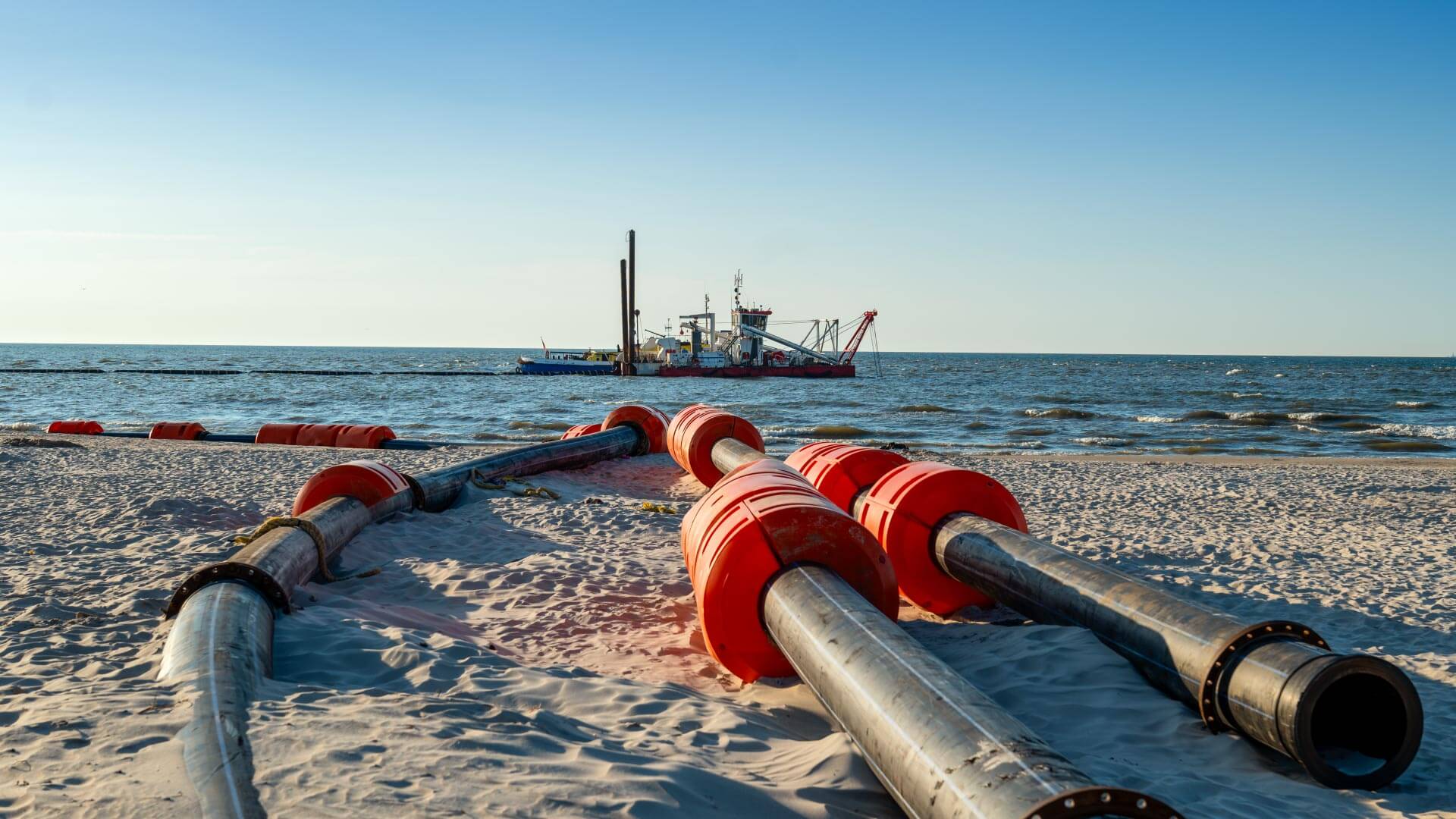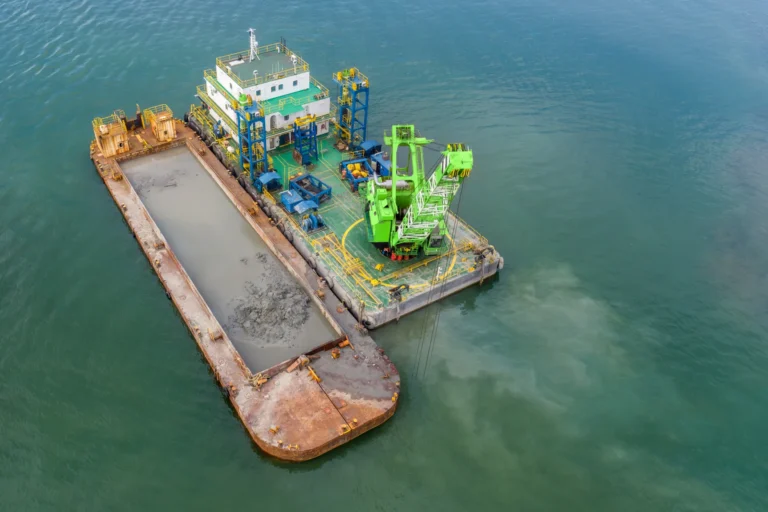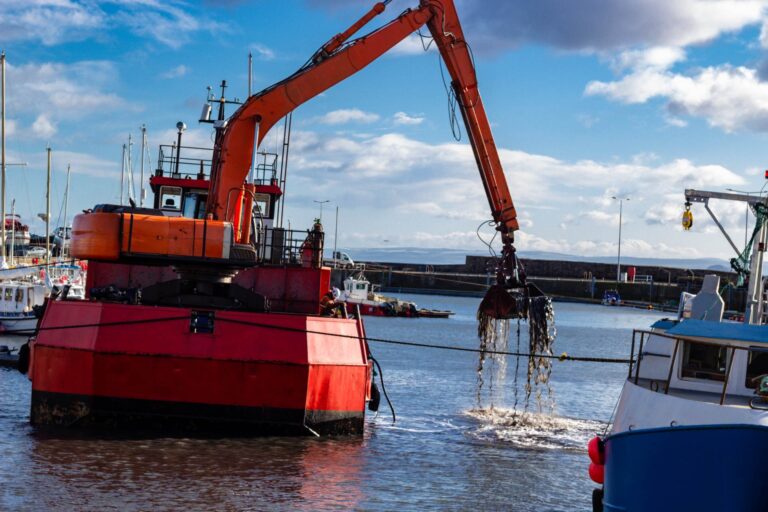Marine dredging is vital for maintaining the functionality of waterways and coastal environments. Over time, natural sedimentation and human activities can lead to the buildup of silt, sand, and debris, reducing water depth and impairing navigation. This accumulation not only hampers vessel movement but also poses risks to marine ecosystems and infrastructure. By employing advanced techniques, marine dredging restores these areas, ensuring safe passage, efficient port operations, and the preservation of aquatic habitats.
Challenges such as sediment-related blockages in ports and harbors highlight the importance of timely intervention. Knowing when and how to dredge harbor marine areas is essential for achieving effective results while minimizing environmental disruption.
This guide explores the methods, applications, and benefits of coastal dredging, providing insights into the processes required to dredge harbor marine spaces efficiently. Proper planning and execution are critical to sustaining waterways and supporting economic and ecological health.
1. What is Marine Dredging?

1.1 Definition of Marine Dredging
Marine dredging is the process of removing accumulated sediments, debris, and other materials from the seabed, harbors, rivers, and coastal areas to maintain or restore their functionality. This technique is vital for ensuring safe navigation, enhancing port operations, and preserving aquatic ecosystems. Unlike other forms of dredging, which may focus on inland or industrial applications, coastal dredging specifically addresses challenges in marine and coastal environments, often requiring specialized equipment and expertise.
Depending on the type of sediment and the project’s scope, the process can involve various methods, such as mechanical or hydraulic dredging. Whether the goal is to deepen shipping channels or to dredge harbor marine areas for safe vessel access, the process plays a crucial role in maintaining maritime infrastructure.
1.2 Why Marine Dredging is Necessary
Marine dredging is essential for addressing sediment buildup that naturally occurs in harbors, rivers, and coastlines due to tidal movements, storms, and human activities. Without proper dredging, these areas become shallow, restricting vessel movement and increasing the risk of accidents.
Additionally, coastal dredging supports coastal development projects by providing stable foundations for new infrastructure and reclaimed land. It is also a key method to dredge harbor marine spaces, ensuring they remain operational and capable of accommodating larger vessels. Through regular maintenance, coastal dredging safeguards the economic and ecological vitality of waterways and coastal regions.
2. Methods of Marine Dredging
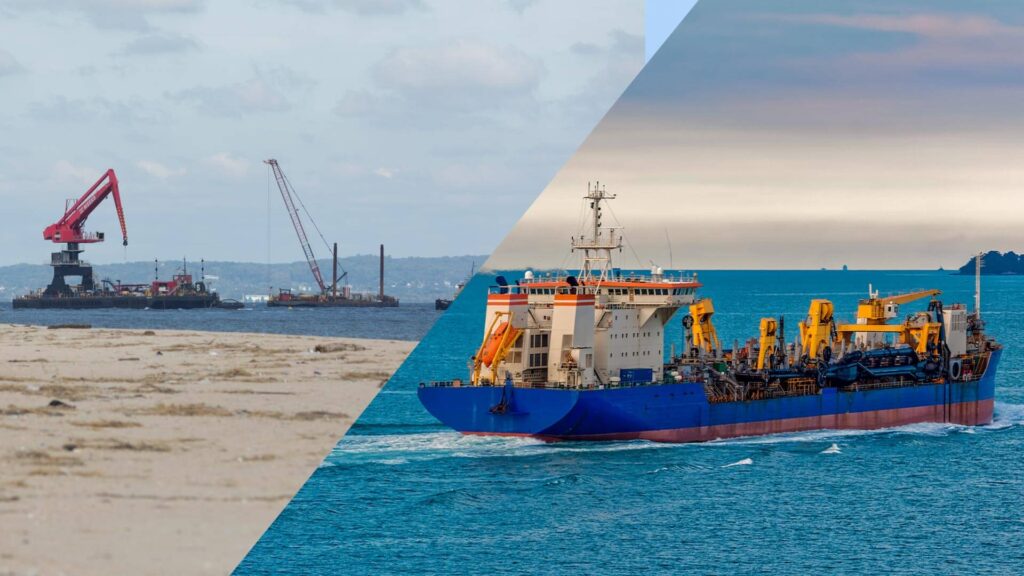
2.1 Mechanical Dredging
Mechanical dredging is a common approach in marine dredging that physically removes sediment and debris using heavy equipment such as backhoes, clamshell dredgers, and excavators. This method is ideal for handling compacted materials like clay, gravel, or rock. Mechanical dredging is often employed for localized projects, such as clearing berths, docks, or confined areas where precision is required. Its ability to remove large volumes of material quickly makes it an effective solution for maintaining critical infrastructure and ensuring navigational safety.
2.2 Hydraulic Dredging
Hydraulic dredging is another widely used method in marine dredging. It utilizes suction pumps to create a sediment-water slurry that is transported through pipelines to a disposal site. This technique is particularly efficient for large-scale projects, such as maintaining shipping channels or beach nourishment. It is a preferred method for dredging harbor marine areas with fine sediments like silt and sand. Hydraulic dredging is less disruptive to the surrounding environment and allows for continuous sediment removal, making it ideal for high-volume operations.
2.3 Specialized Methods
Specialized dredgers, such as cutter suction dredgers and trailing suction hopper dredgers, are used for specific marine projects. Cutter suction dredgers are effective for precision work in challenging conditions, while trailing suction hopper dredgers are designed for deep-water operations and transporting sediment over long distances. These methods enhance the versatility and efficiency of marine dredging projects.
Selecting the appropriate method depends on the project’s scale, sediment type, and environmental considerations, ensuring efficient and sustainable outcomes.
3. Key Applications of Marine Dredging
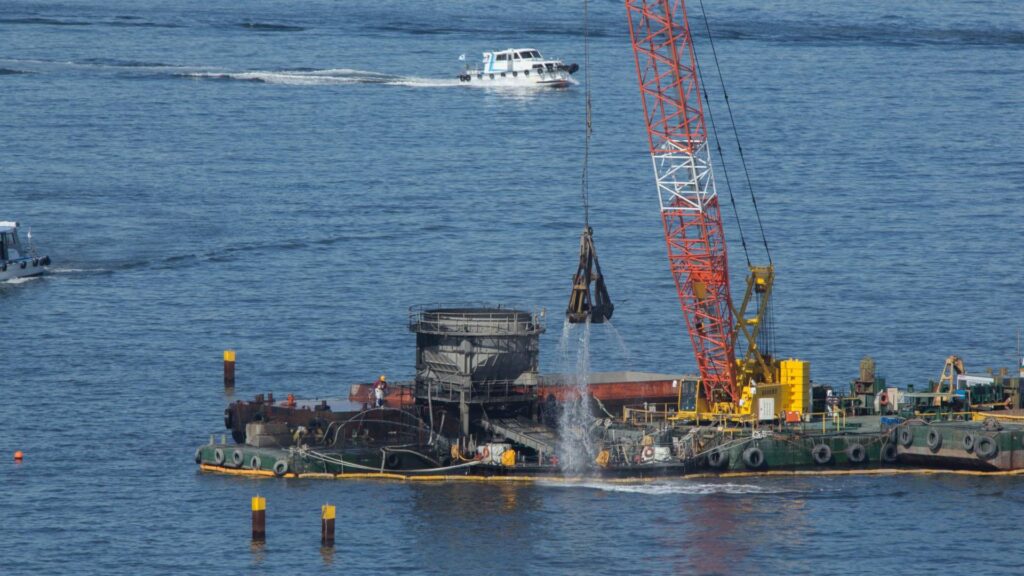
3.1 Navigation Maintenance
One of the primary applications of marine dredging is maintaining navigational safety for commercial and recreational vessels. Sediment buildup in waterways, harbors, and ports can create shallow areas that hinder vessel movement and increase the risk of groundings or accidents. By employing specialized techniques to dredge harbor marine areas, operators can ensure adequate depth and clear pathways for vessels of all sizes. Regular dredging helps sustain uninterrupted trade and tourism activities while enhancing overall maritime safety.
3.2 Coastal Development and Land Reclamation
Marine dredging plays a vital role in coastal development and land reclamation projects. By removing sediment from targeted areas and repurposing it, new land can be created for urban expansion, industrial development, or recreational use. Additionally, dredging enhances existing shorelines, strengthens coastal defenses, and mitigates the impacts of erosion. These projects not only provide economic benefits but also improve the resilience of coastal areas against rising sea levels and storm surges.
3.3 Environmental Remediation
Another critical application of coastal dredging is environmental remediation, particularly the removal of contaminated sediments from waterways. Pollutants from industrial activities, urban runoff, and agricultural sources often accumulate in sediment, posing risks to aquatic ecosystems and human health. By carefully planning and executing dredging operations to dredge harbor marine areas, contaminants can be removed and disposed of safely. This process restores water quality, promotes biodiversity, and rejuvenates aquatic habitats, making it an essential tool for environmental conservation.
Marine dredging is indispensable for maintaining navigational safety, supporting coastal development, and addressing environmental challenges. Thus, it is a cornerstone of sustainable maritime management.
4. Benefits of Marine Dredging
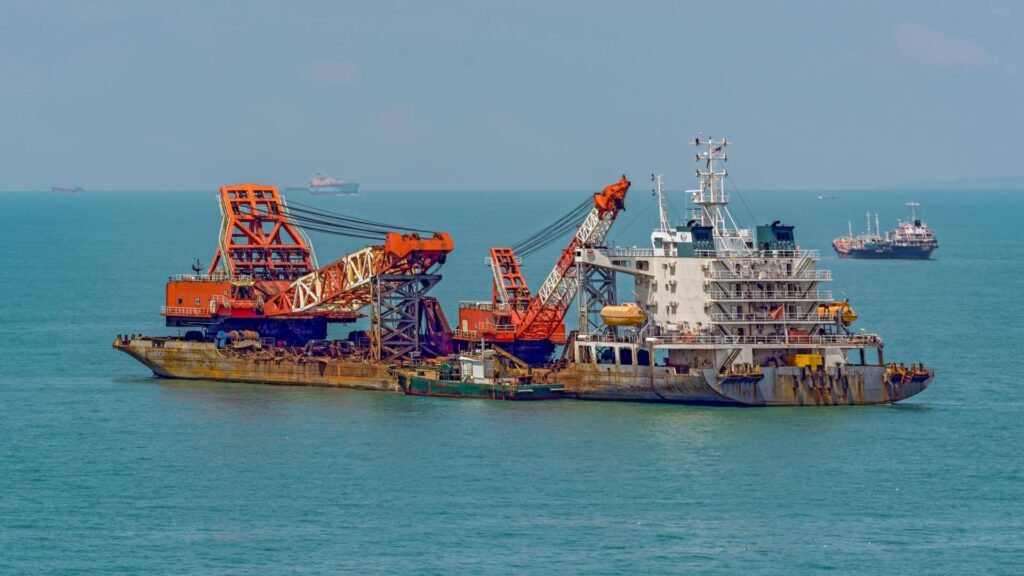
4.1 Economic Benefits
Marine dredging provides substantial economic advantages by ensuring the smooth operation of trade and transportation. Clear and navigable waterways allow commercial vessels to access ports efficiently, boosting cargo throughput and supporting global supply chains. Additionally, by maintaining optimal water depths, dredging helps ports accommodate larger vessels, increasing their competitiveness. Recreational activities such as boating and fishing also benefit, attracting tourists and boosting local economies. Regular efforts to dredge harbor marine areas contribute significantly to these economic gains.
4.2 Environmental Advantages
Marine dredging also has environmental benefits, particularly when applied to restoring aquatic ecosystems. By removing accumulated sediment, dredging improves water flow and quality, creating healthier conditions for aquatic life. This process also mitigates flood risks by enhancing waterway capacity, especially in areas prone to heavy rainfall or storm surges. Strategic efforts to dredge harbor marine areas can revitalize ecosystems, balance habitats, and support biodiversity while effectively addressing sedimentation issues.
4.3 Infrastructure Protection
Accumulated sediment can pose significant risks to ports, bridges, and coastal structures by exerting additional pressure and causing erosion. Marine dredging prevents these risks by maintaining appropriate water depths and sediment levels, ensuring the longevity of critical infrastructure. For harbors and coastal areas, regular maintenance dredging is a proactive measure that protects investments and minimizes costly repairs, underscoring the importance of sustainable management practices.
coastal dredging serves as an essential tool for economic growth, environmental sustainability, and infrastructure resilience.
5. Challenges in Marine Dredging and How to Overcome Them
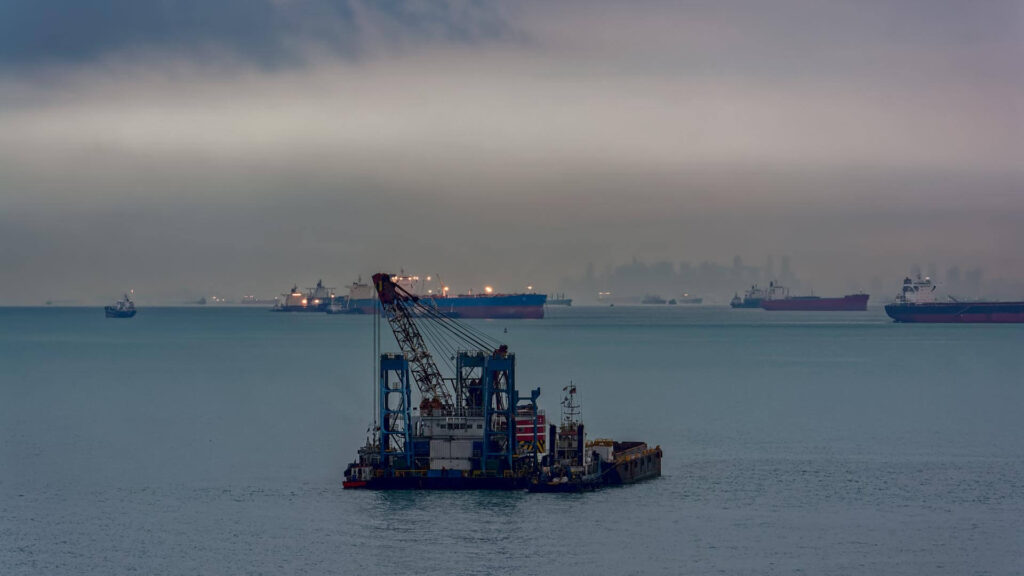
5.1 Environmental Impact
Marine dredging projects can challenge aquatic ecosystems and water quality. Sediment disturbance may release contaminants, impact marine life, and alter water clarity. To mitigate these effects, sustainable practices are essential. This includes careful planning, using environmentally friendly equipment, and implementing sediment containment measures. Timing is crucial for dredge harbor marine projects. Scheduling dredging outside of breeding seasons and avoiding sensitive habitats helps minimize ecological disruption. Regular monitoring ensures that water quality remains within acceptable levels throughout the project.
5.2 Cost and Budgeting
The cost of marine dredging can be significant, especially for large-scale operations, requiring careful financial planning. Factors such as project size, sediment type, and disposal methods influence overall expenses. Balancing these costs with the long-term benefits of dredging is critical. For instance, maintaining clear waterways prevents costly emergency dredging and enhances port efficiency. Funding options such as government grants, public-private partnerships, and environmental initiatives can alleviate financial burdens. Proper cost assessments and transparent communication with stakeholders help ensure that dredge harbor marine projects stay within budget while achieving their objectives.
5.3 Weather and Operational Disruptions
Adverse weather conditions, such as storms or high winds, can disrupt marine dredging operations and lead to delays. These interruptions increase costs and prolong project timelines. To address this, project planners should incorporate weather forecasting tools and contingency plans. Scheduling dredging activities during favorable weather conditions and low-traffic periods in harbors minimizes risks and ensures continuity. Flexible equipment and skilled crews can further mitigate disruptions, ensuring that dredge harbor marine operations remain on track.
Overcoming these challenges requires strategic planning, advanced technology, and sustainable practices, which ensure that coastal dredging projects are effective and environmentally responsible.
6. Innovations in Marine Dredging Technology
6.1 Advanced Dredging Equipment
Modern marine dredging projects benefit from high-capacity dredgers equipped with automation and advanced controls. These machines, such as cutter suction dredgers and trailing suction hopper dredgers, are designed to handle diverse sediment types efficiently. Automation enhances operational precision, reducing manual intervention and improving productivity. For large-scale efforts to dredge harbor marine areas, such equipment ensures faster project completion with minimal environmental disruption. Moreover, modern dredgers now incorporate advanced energy-saving systems, reducing fuel consumption and emissions, which aligns with global sustainability initiatives. These innovations also enhance the adaptability of equipment to varied sediment types and site conditions.
6.2 Data and Mapping Tools
Data-driven tools have become indispensable in marine dredging, enabling more accurate planning and execution. Bathymetric surveys, which use sonar to map underwater topography, provide detailed insights into sediment distribution and depth variations. Real-time sediment monitoring allows project managers to adjust operations dynamically, ensuring optimal efficiency. These technologies are particularly valuable when undertaking projects to dredge harbor marine environments, as they help identify problem areas and minimize unnecessary dredging, reducing costs and environmental impact. Additionally, predictive analytics based on data trends helps prevent project delays and ensures resource optimization, improving overall project outcomes.
6.3 AI and Robotics in Marine Dredging
Artificial intelligence and robotics are transforming the marine dredging industry. AI-powered systems analyze real-time data to optimize dredging paths, enhance precision, and reduce waste. Robotics, such as underwater drones, are increasingly used for sediment sampling, equipment inspection, and monitoring, ensuring greater safety and accuracy. These innovations are particularly effective in challenging or sensitive environments, making them ideal for large-scale or high-stakes dredging projects. AI also facilitates enhanced project planning by simulating potential outcomes, allowing stakeholders to make informed decisions. Robotics are now capable of executing complex underwater tasks autonomously, improving overall efficiency.
By integrating advanced equipment, data tools, and AI technologies, coastal dredging operations have become more efficient, sustainable, and cost-effective. These innovations enable stakeholders to execute projects with greater confidence, ensuring long-term benefits for navigation, infrastructure, and the environment.
Conclusion
Marine dredging is essential for maintaining the functionality of waterways, supporting coastal development, and preserving environmental health. By addressing sediment buildup, dredging ensures safe navigation, protects vital infrastructure, and enhances aquatic ecosystems. Whether for navigation maintenance, land reclamation, or environmental remediation, marine dredging is a cornerstone of sustainable maritime operations.
The effectiveness of any dredging project relies on the use of advanced methods, sustainable practices, and meticulous planning. Leveraging modern equipment, such as high-capacity dredgers, and integrating technologies like AI and data-driven tools can significantly improve efficiency and reduce environmental impact. Professional expertise is critical in selecting the right approach and executing the project effectively.
If you plan to dredge harbor marine areas, consulting with experts is vital to ensure compliance with environmental regulations, cost efficiency, and long-term success. Regular dredging maintenance supports economic growth and strengthens the resilience of waterways and coastal regions against future challenges.
Investing in well-planned coastal dredging projects is an investment in the future health and sustainability of maritime environments. Take the next step today by engaging with professional dredging services to plan and execute your dredge harbor marine project with confidence, precision, and care for the environment.


